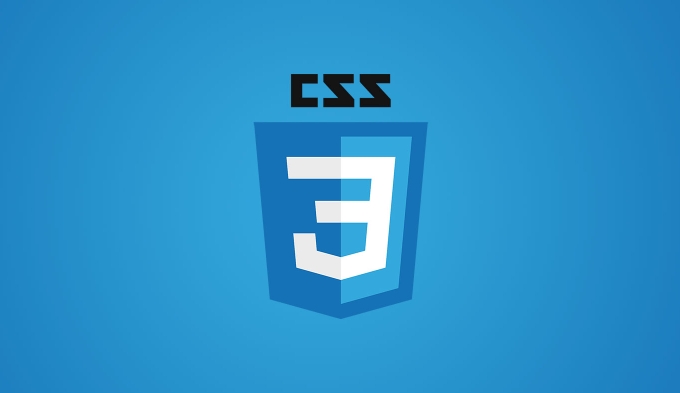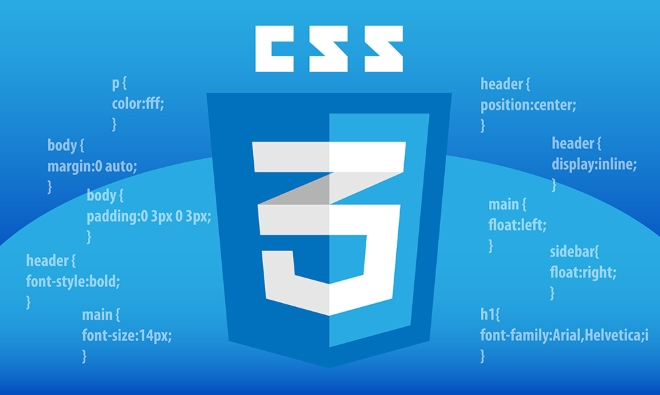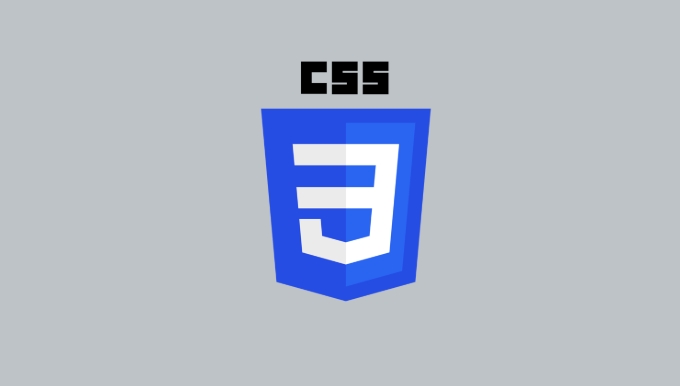To create a flipped card effect using CSS, the key is to utilize 3D conversion and cascade control. The specific steps are as follows: 1. Build an HTML structure, set the outer container card-container and the internal front and back faces; 2. Set the style, open the 3D space through perspective, use transform-style: preserve-3d to maintain the 3D effect of child elements, and hide the back content through backface-visibility: hidden; 3. Use:hover pseudo-class or JavaScript to trigger the rotateY transformation to achieve flip animation; 4. Adjust the card size, shadow and other details to enhance the visual effect and interactive experience.

Want to use CSS to make a flip card effect? In fact, it is not difficult. The key is to understand how to use CSS's 3D conversion and casing to achieve visual "flip" effect. The core idea is to let the front and rear faces share the same space, and toggle which side to display by rotating the container.

The following are several steps to achieve this effect:
Basic structure: HTML structure should be clear
You need an outer container with two parts: front and back. The structure is roughly as follows:

<div class="card-container">
<div class="card">
<div class="front">Positive content</div>
<div class="back">Back content</div>
</div>
</div>The advantage of this is that it is convenient to control flip animations in a unified manner, and front and back can set styles independently.
Style preparation: Turn on 3D space and hide the back
In order for the card to be flipped, the 3D rendering context needs to be turned on. At the same time, only the front side is displayed by default, and the back side should be hidden.

.card-container {
perspective: 1000px; /* Turn on 3D effect*/
}
.card {
position: relative;
width: 200px;
height: 300px;
transform-style: preserve-3d; /* Keep the 3D space of the child elements*/
transition: transform 0.6s; /* Add animation transition*/
}
.front, .back {
position: absolute;
width: 100%;
height: 100%;
backface-visibility: hidden; /* hide the back*/
}
.back {
transform: rotateY(180deg); /* The initial state has the back side facing back*/
}There are three key points in this code:
-
perspectivecontrols viewing angle distance -
transform-style: preserve-3dkeeps the transformation in three-dimensional space -
backface-visibility: hiddenensures that the reverse content on the other side cannot be seen when flipped
Implementing flip: Trigger the rotation action
You can trigger flips by hovering, clicking, or JavaScript. The most common one is to use :hover to simulate interactive behavior:
.card-container:hover .card {
transform: rotateY(180deg); /* horizontal flip*/
}In this way, when the mouse is moved up, the card will turn over and display the content on the back. If you want to support click flip, you can use JavaScript to dynamically switch the class name or directly modify the transform attribute.
Tips: Adjust details more naturally
- The card size must be clear : if the width and height are not set, the layout may be wrong.
- z-index is not very suitable : because 3D transformation is used, hierarchical control mainly relies on the transformation order rather than z-index.
- Shadows can be added to enhance the three-dimensional sense :
.card {
box-shadow: 0 4px 8px rgba(0,0,0,0.2);
}Basically that's it. As long as the HTML structure is clear and the CSS is set correctly, you can easily create a cool-looking flip card effect. Although the process needs to be paid attention to in detail, it is also easy to transform it into vertical flips or other animations after mastering the principles.
The above is the detailed content of How to create a flip card effect with CSS?. For more information, please follow other related articles on the PHP Chinese website!

Hot AI Tools

Undress AI Tool
Undress images for free

Undresser.AI Undress
AI-powered app for creating realistic nude photos

AI Clothes Remover
Online AI tool for removing clothes from photos.

Clothoff.io
AI clothes remover

Video Face Swap
Swap faces in any video effortlessly with our completely free AI face swap tool!

Hot Article

Hot Tools

Notepad++7.3.1
Easy-to-use and free code editor

SublimeText3 Chinese version
Chinese version, very easy to use

Zend Studio 13.0.1
Powerful PHP integrated development environment

Dreamweaver CS6
Visual web development tools

SublimeText3 Mac version
God-level code editing software (SublimeText3)
 CSS tutorial for creating loading spinners and animations
Jul 07, 2025 am 12:07 AM
CSS tutorial for creating loading spinners and animations
Jul 07, 2025 am 12:07 AM
There are three ways to create a CSS loading rotator: 1. Use the basic rotator of borders to achieve simple animation through HTML and CSS; 2. Use a custom rotator of multiple points to achieve the jump effect through different delay times; 3. Add a rotator in the button and switch classes through JavaScript to display the loading status. Each approach emphasizes the importance of design details such as color, size, accessibility and performance optimization to enhance the user experience.
 Addressing CSS Browser Compatibility issues and prefixes
Jul 07, 2025 am 01:44 AM
Addressing CSS Browser Compatibility issues and prefixes
Jul 07, 2025 am 01:44 AM
To deal with CSS browser compatibility and prefix issues, you need to understand the differences in browser support and use vendor prefixes reasonably. 1. Understand common problems such as Flexbox and Grid support, position:sticky invalid, and animation performance is different; 2. Check CanIuse confirmation feature support status; 3. Correctly use -webkit-, -moz-, -ms-, -o- and other manufacturer prefixes; 4. It is recommended to use Autoprefixer to automatically add prefixes; 5. Install PostCSS and configure browserslist to specify the target browser; 6. Automatically handle compatibility during construction; 7. Modernizr detection features can be used for old projects; 8. No need to pursue consistency of all browsers,
 What is the difference between display: inline, display: block, and display: inline-block?
Jul 11, 2025 am 03:25 AM
What is the difference between display: inline, display: block, and display: inline-block?
Jul 11, 2025 am 03:25 AM
Themaindifferencesbetweendisplay:inline,block,andinline-blockinHTML/CSSarelayoutbehavior,spaceusage,andstylingcontrol.1.Inlineelementsflowwithtext,don’tstartonnewlines,ignorewidth/height,andonlyapplyhorizontalpadding/margins—idealforinlinetextstyling
 Creating custom shapes with css clip-path
Jul 09, 2025 am 01:29 AM
Creating custom shapes with css clip-path
Jul 09, 2025 am 01:29 AM
Use the clip-path attribute of CSS to crop elements into custom shapes, such as triangles, circular notches, polygons, etc., without relying on pictures or SVGs. Its advantages include: 1. Supports a variety of basic shapes such as circle, ellipse, polygon, etc.; 2. Responsive adjustment and adaptable to mobile terminals; 3. Easy to animation, and can be combined with hover or JavaScript to achieve dynamic effects; 4. It does not affect the layout flow, and only crops the display area. Common usages are such as circular clip-path:circle (50pxatcenter) and triangle clip-path:polygon (50%0%, 100 0%, 0 0%). Notice
 Styling visited links differently with CSS
Jul 11, 2025 am 03:26 AM
Styling visited links differently with CSS
Jul 11, 2025 am 03:26 AM
Setting the style of links you have visited can improve the user experience, especially in content-intensive websites to help users navigate better. 1. Use CSS's: visited pseudo-class to define the style of the visited link, such as color changes; 2. Note that the browser only allows modification of some attributes due to privacy restrictions; 3. The color selection should be coordinated with the overall style to avoid abruptness; 4. The mobile terminal may not display this effect, and it is recommended to combine it with other visual prompts such as icon auxiliary logos.
 How to create responsive images using CSS?
Jul 15, 2025 am 01:10 AM
How to create responsive images using CSS?
Jul 15, 2025 am 01:10 AM
To create responsive images using CSS, it can be mainly achieved through the following methods: 1. Use max-width:100% and height:auto to allow the image to adapt to the container width while maintaining the proportion; 2. Use HTML's srcset and sizes attributes to intelligently load the image sources adapted to different screens; 3. Use object-fit and object-position to control image cropping and focus display. Together, these methods ensure that the images are presented clearly and beautifully on different devices.
 Demystifying CSS Units: px, em, rem, vw, vh comparisons
Jul 08, 2025 am 02:16 AM
Demystifying CSS Units: px, em, rem, vw, vh comparisons
Jul 08, 2025 am 02:16 AM
The choice of CSS units depends on design requirements and responsive requirements. 1.px is used for fixed size, suitable for precise control but lack of elasticity; 2.em is a relative unit, which is easily caused by the influence of the parent element, while rem is more stable based on the root element and is suitable for global scaling; 3.vw/vh is based on the viewport size, suitable for responsive design, but attention should be paid to the performance under extreme screens; 4. When choosing, it should be determined based on whether responsive adjustments, element hierarchy relationships and viewport dependence. Reasonable use can improve layout flexibility and maintenance.
 What are common CSS browser inconsistencies?
Jul 26, 2025 am 07:04 AM
What are common CSS browser inconsistencies?
Jul 26, 2025 am 07:04 AM
Different browsers have differences in CSS parsing, resulting in inconsistent display effects, mainly including the default style difference, box model calculation method, Flexbox and Grid layout support level, and inconsistent behavior of certain CSS attributes. 1. The default style processing is inconsistent. The solution is to use CSSReset or Normalize.css to unify the initial style; 2. The box model calculation method of the old version of IE is different. It is recommended to use box-sizing:border-box in a unified manner; 3. Flexbox and Grid perform differently in edge cases or in old versions. More tests and use Autoprefixer; 4. Some CSS attribute behaviors are inconsistent. CanIuse must be consulted and downgraded.






